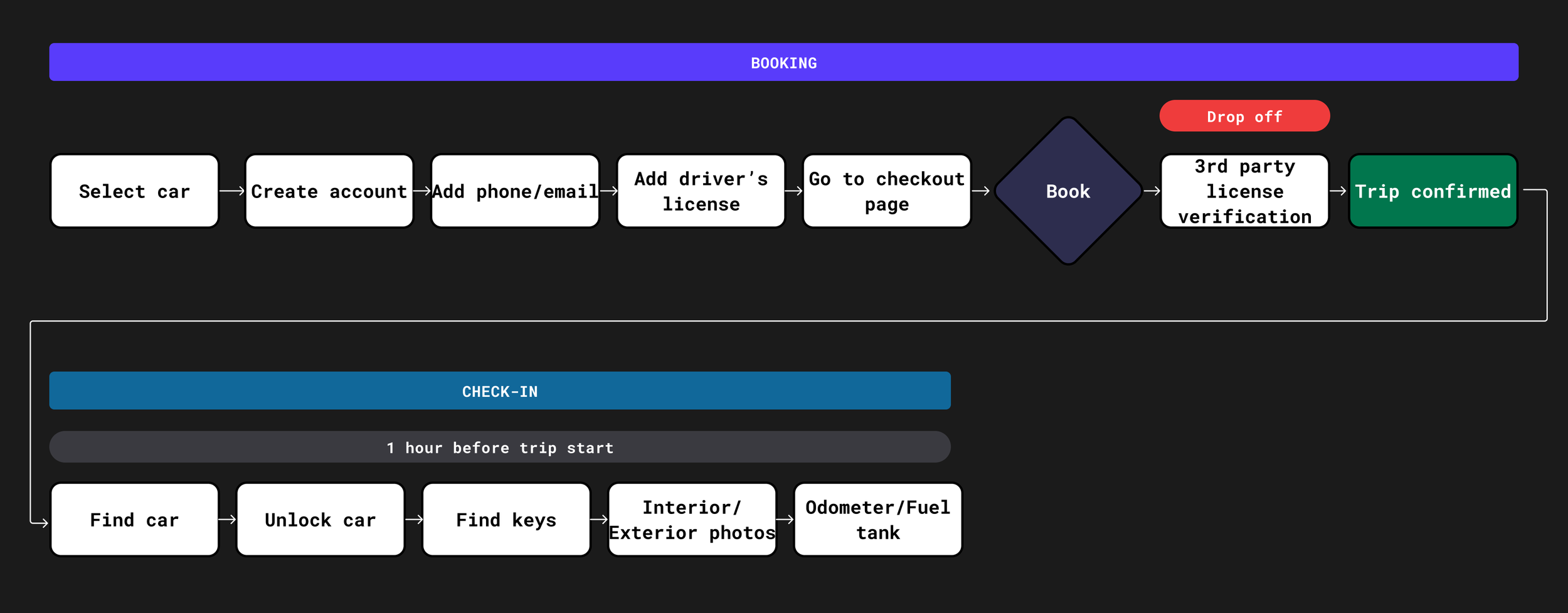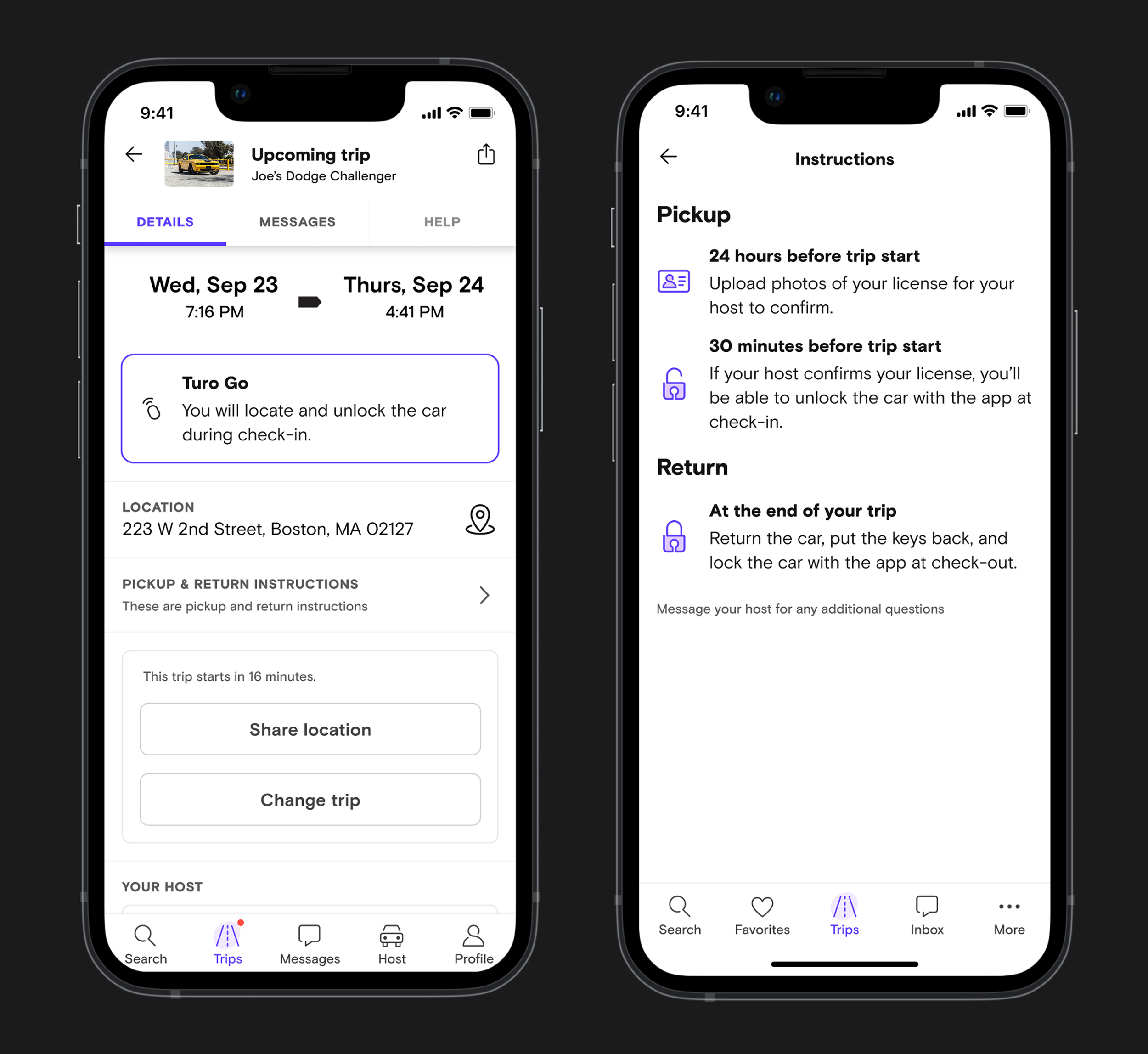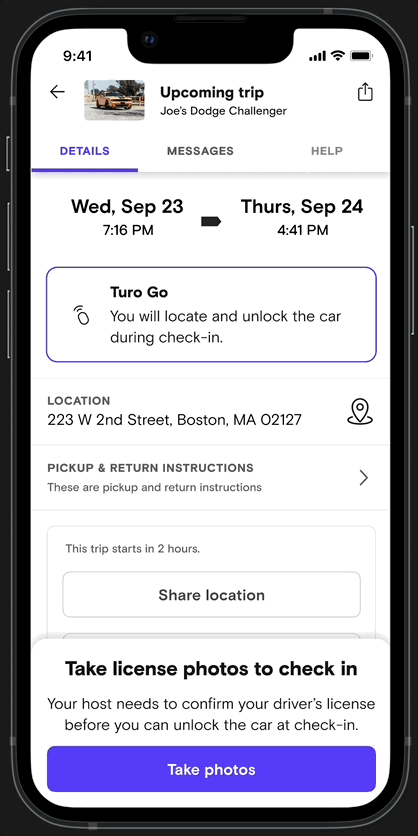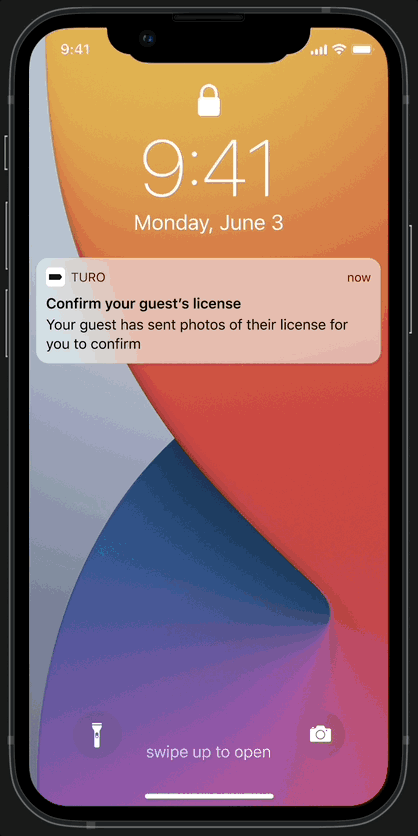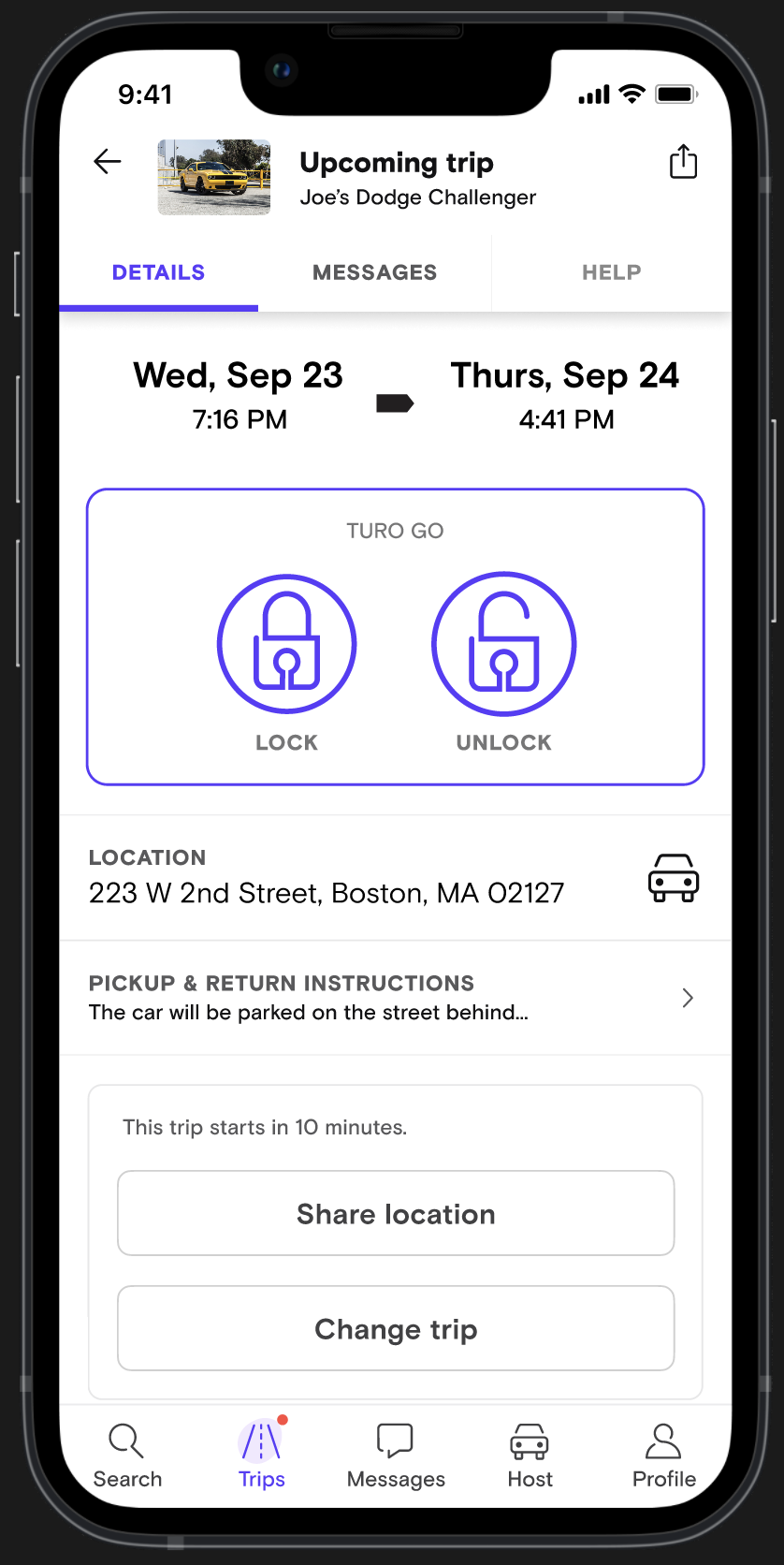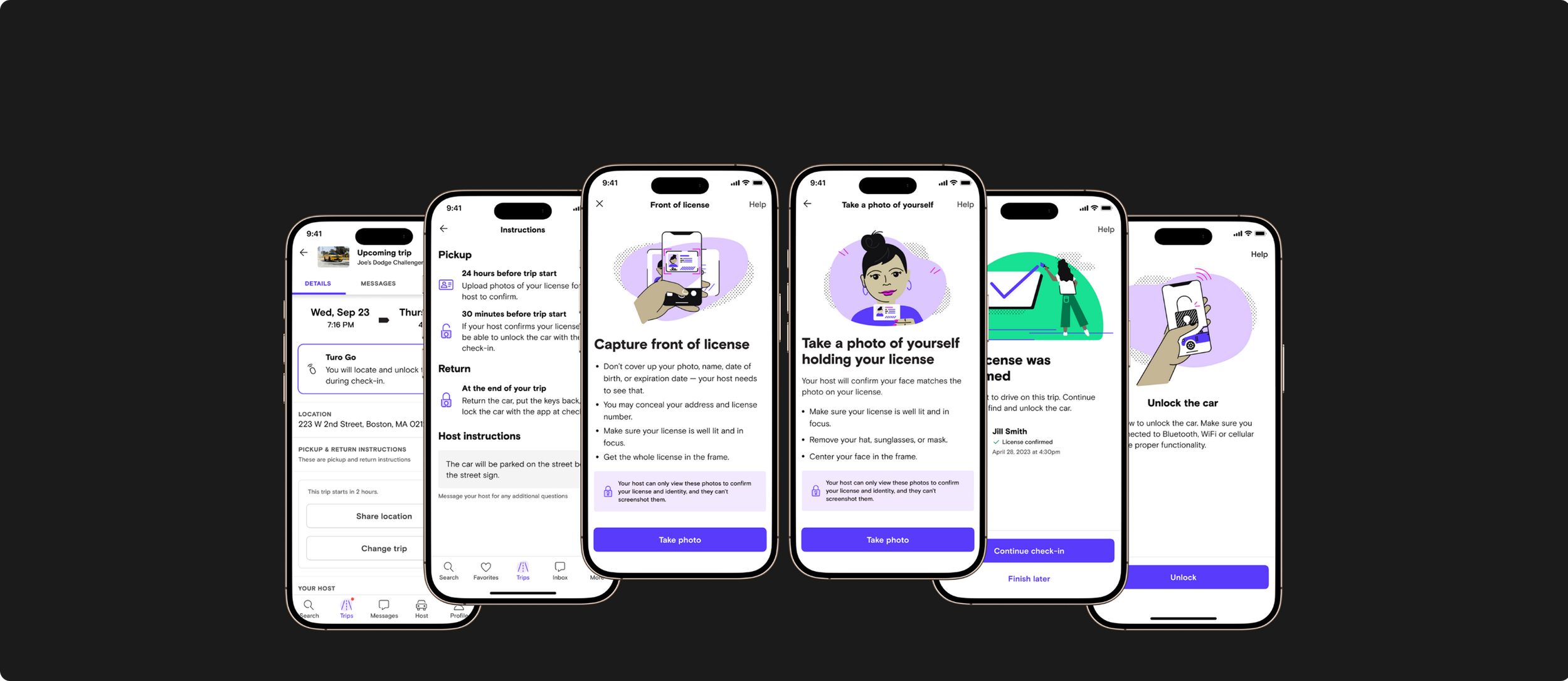
Improving Identity Verification for Remote Trips
Reducing guest drop-off and increasing revenue by shifting ID verification to check-in
Overview
For remote Turo trips, guests needed to verify their license and identity using a third-party tool (Mitek) before checking out. This step created friction, causing drop-off and lost revenue — especially since guests had already passed ID checks when they joined the platform.
To reduce friction, I led the design of a license confirmation flow that allowed hosts to confirm the guest’s license at check-in instead. This let us remove the Mitek step, standardize the identity experience across trip types, and improve conversion.
PRIMARY METRIC
5.5% increase in checkout click-to-contact rate
RESULTS
7% increase in checkout click-to-contact rate
$1 million additional gross revenue per month
My Role
I was the sole and lead designer on this project, collaborating closely with:
The Guest team — to ensure we didn’t compromise on trust or verification
The Host team — since we were asking them to confirm license information at check-in
Ops and legal — to make sure the new process met compliance and support requirements
This was a cross-functional, cross-surface effort where I drove alignment, designed the end-to-end flow, and helped balance business goals with host burden and user experience.
Discovery & Problem Framing
Remote trips on Turo — where guests unlock the car with the app — require a high level of trust and identity verification. At the time, new guests were asked to complete a third-party license verification (Mitek) after checkout. This added unexpected friction, especially after they had already uploaded their license to create their account during checkout.
The impact was clear in the data:
Remote trips had a checkout click-to-contact rate of just 74%
Guests were creating accounts, selecting cars, and then abandoning after checkout due to the added verification step
On the host side, we found that many hosts were already asking for license photos manually through Turo messages. Not only did this introduce inconsistency, but it also made guests feel uncertain or uncomfortable.
PROBLEM #1
License entry for account creation + a 3rd party license check after booking created unnecessary friction and hurt conversion
PROBLEM #2
Lack of verification checks before pickup introduced risk and eroded trust in hosts
PROBLEM #3
Hosts asking for guest license photos in messages before trip start caused privacy concerns for guests
We saw an opportunity to:
Remove Mitek at checkout
Let hosts confirm guest licenses in a structured, in-product way during the check-in process
Standardize trust and reduce friction — without compromising safety
HOW MIGHT WE
build trust and reduce drop-off by making license verification feel integrated and seamless — without adding extra steps?
Design Approach and Ideation
We explored two main paths to improve the remote check-in experience:
Option 1: Move Mitek verification to check-in
Guests would complete the third-party ID check 30 minutes before their trip, and once verified, the car unlock feature would activate.
This reduced fraud risk since the account holder would need to be at the vehicle. However, we had major concerns: connectivity issues in garages, poor lighting at night, and no backup plan if the verification failed — which could leave guests stranded and cars inaccessible.
Option 2: Remove Mitek entirely and bring verification in-app
Instead of using a third party, we’d ask guests to upload photos of their license, which would be sent to hosts for approval. Once confirmed, the guest could unlock the car. This aligned with our in-person flow (where hosts visually verify licenses), gave more transparency to both sides, and significantly reduced cost. The tradeoff was that it added a manual step for hosts and could cause delays if they didn’t respond quickly.
WINNER: Option 2 — it was consistent with the rest of our experience, more trustworthy for guests, and let us phase out reliance on a costly third-party vendor.
Usability testing
Before we got into final designs, we ran usability testing sessions on 10 users to make sure things made sense.
We wanted to see:
Did guests understand they had to upload their license before the trip?
Was it clear that hosts would be reviewing the photos?
Would they feel confident that they’d still be able to access the car on time?
Research participant
“What if the host tries to steal my license information? Now they know where I live.”
Research participant
“It seems straightforward. If I was going to Hertz, I’d have to show them my license too.”
Overall, guests understood the steps and liked that the process was happening in-app instead of with a random 3rd party.
Key insights:
Add more copy throughout the flow reassuring guests about their privacy and what information they can hide.
Add a confirmation screen after license photos are sent to set expectations to the guest
Add detailed check-in information under ‘pickup and return instructions’ so guests can understand the process immediately after booking.
Final Designs
Our goal was to create a simple, structured experience that gave hosts the ability to confirm licenses, while building trust and clarity for guests.
Setting clear expectations
We updated the ‘pickup and return instructions’ to inform guests upfront that they would need to upload their license and a selfie as part of the check-in process.
This reduced surprises and reinforced trust by positioning it as a Turo requirement.
Walkthrough and privacy reassurance
From the research we knew privacy was a huge concern for guests. We walked the users through each step and allowed edit capabilities so guests could block out their address to reinforce the sense of security.
Host license review and approval
From the host side, we wanted to ensure this process was easy for hosts and aligned with non-remote trips. By notifying hosts and keeping UI consistent, this did not introduce any extra work on their end and eliminated the need for off-platform requests.
Guest unlock enabled
Once the host confirmed the guest’s identity, the app would enable the “Remote Unlock” if it was 30 minutes before the trip start time. This kept the process secure while maintaining a seamless, app-based experience for the guest
Results & Reflection
The new flow launched smoothly and immediately improved the guest experience — especially for remote trips where we previously saw a lot of drop-off.
7% increase in checkout click-to-contact rate
Resulted in an ~$1 million in gross revenue per month
Reduced reliance on Mitek, saving on vendor costs
Standardized the experience across trip types
